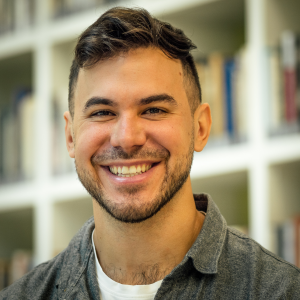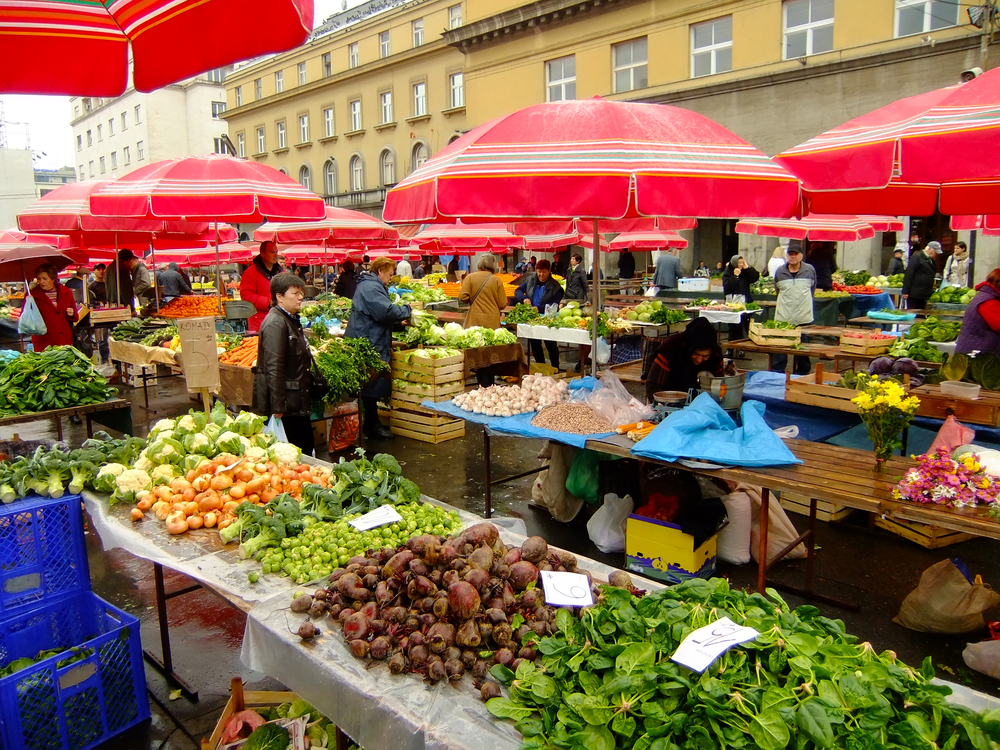
Titus started his doctorate in 2020, and currently investigates how different settings such as a food market affect communication in people that speak two different languages, which are commonly referred to as bilinguals. He always was fascinated by human interaction, and language is a big piece of that. After growing up in New Jersey, USA, he attended a language school in Granada. Students at the language school had different language backgrounds but were all studying Spanish together. Some students spoke Swedish, others Italian, but they would all communicate with each other in English or their newly learned Spanish. Titus: “The interaction with other people was really interesting; I had to think about which words I should use to be understood, and how we are understood in general.” His doctorate was a natural progression of his previous degree in cognitive (neuro-) science.
In his experiments, Titus uses virtual reality. This is a big step forward from previous neuroscience research, where single words are often used outside of everyday environments to investigate human communication. Titus: “I am really excited about all the possibilities we have by using a setting that is not a static laboratory setup.” 3D environments in virtual reality enable a dynamic and more representative setting of a real world scenario. This can help to better investigate how we actually communicate, and what influences communication. Other environments where participants can interact with virtual objects and avatars can be created more easily.
For instance, in one of Titus’ experiments, Dutch-English bilingual participants are instructed to act as if they are the owner of a fruit and vegetable stand at a food market. The participants are wearing virtual reality glasses, and are immersed in a virtual 3D environment that looks just like a marketplace that you would typically find in the Netherlands. During the experiment, their brain activity is recorded using electroencephalography (EEG). EEG is a safe method that consists of placing multiple electrodes on someone’s head using a cap (comparable to a swimming cap). To find out what kind of questions people answer using EEG, read Alex Titus’ own blog here.
These electrodes can measure the electrical activity of the brain over a period of time. While the participants are immersed in the 3D environment, avatars (virtual characters) with different language backgrounds (Dutch or English) show them the fruits or vegetables they want to buy. The participants then have to say how much the item costs in the avatar’s respective language. The idea is that the familiar setting will help the bilingual participants to switch more easily between their two native languages, by making the languages more accessible.

Research using 3D environments in virtual reality may induce some challenges as well: it could be that there are social biases towards the different avatars. The avatars may also not be perceived in the same way as real humans would be. This could affect how participants interact with them. One way to overcome these challenges is to ask participants how they perceived the avatars, and to take this into account. A future step of Titus’ research is to investigate whether his findings also apply to other types of bilinguals such as Chinese-English bilinguals, since Chinese and English words overlap in very different ways than Dutch and English words.
So next time you are at a market place, try to do what the multitasking market shopper did and call an international friend. Does being in a familiar setting make it easier for you to speak their language?
Read further:
- Peeters, D. (2019). Virtual reality: A game-changing method for the language sciences. Psychonomic Bulletin & Review, 26(3), 894–900. https://doi.org/10.3758/s13423-019-01571-3
- Peeters, D. (2020). Bilingual switching between languages and listeners: Insights from immersive virtual reality. Cognition, 195, 104107. https://doi.org/10.1016/j.cognition.2019.104107
- Willems, R. M., & Peelen, M. V. (2021). How context changes the neural basis of perception and language. IScience, 24(5), 102392. https://doi.org/10.1016/j.isci.2021.102392

